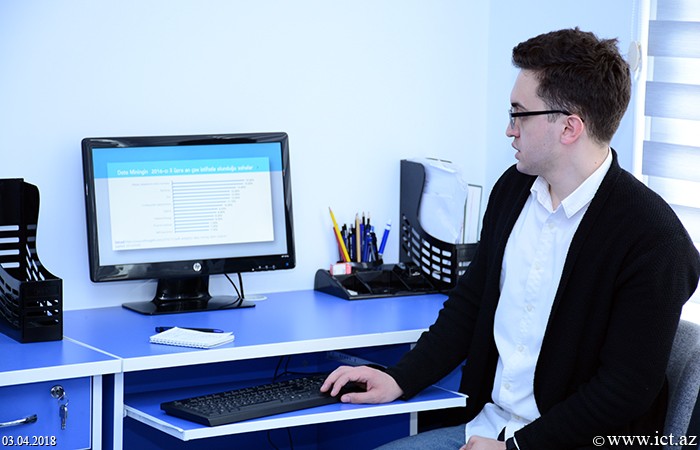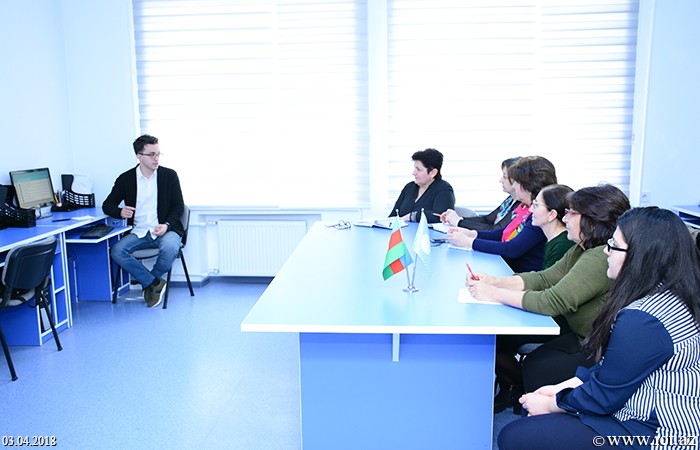NEWS
Seminar on "Data Mining Technologies" held
The next scientific seminar on the topic "Data Mining Technologies" was held at the Institute of Information Technology of ANAS.
Giving information on the history of Data Mining, E. Garayev said that before it was named as Knowledge Discovery in Database (QDD), but as a term it was used by Q.P. Shapiro in 1989. The speaker also described step-by-step explanation of data mining's descriptive and predictive issues.
The reporter stressed that Data mining is a multidisciplinary field and it includes statistics, artificial intelligence, machine learning, and so on. Data mining algorithms and methods include classification, clusterization, regression, artificial intelligence, neural network, associative rules, decision tree, genetic algorithms and so on. he said.
E.Garayev noted that data mining methods consisted of analyzing the stages of problem solving, collection and preparation of data, model selection and training, selection of algorithm, analysis of revealed laws.
He noted that it is applied in the field of information management technologies such as customer relations management, finance, banking, advertising, science, health, fraud detection, retail, insurance, e-commerce, telecommunications, social media, software, oil and gas, energy.
The reporter pointed out the classification, which forms the basis of data mining technologies. He noted that the classification of objects is a process of classification according to the similarities and proximity traits.
Then he gave information about some classification algorithms. He pointed out some algorithms such as KNN (k-nearest neighbor) algorithm, decision trees, Bayes classification method, algorithms based on rules, genetic algorithms, neural networks, SVM-support vector machine and other algorithms.
Later, E. Garayev said that he was studying the KNN algorithm more widely.
A reporter explaining the KNN algorithm said that it was acknowledged by Fix and Hodges in a report by the US Air Force in 1951 and developed by Cover and Hart in 1967. The KNN is called the classification algorithm based on the logic of "objects close to each other are likely to belong to the same class objects.
He noted noted the possibility of applying KNN algorithm to the fields of diagnosis of disease, recognition of sounds, identification of duplicates, identification of user behavior, recognition of manuscripts and so on.. He emphasized that this algorithm is more commonly used in classification algorithms.
He also pointed out the main drawback of the KNN algorithm, pointing to a smaller clarity and more time loss for each sample.
At the end of the discussion, the opinions were exchanged, questions were answered. Chief engineer of the Institute, PhD in Techology, associate professor Makrufa Hajirahimova recommended to continue the research in this field, to write the article on the results of the research, to discuss the main methods and algorithms from the data mining class and to regularly discuss departmental seminars.
© All rights reserved. Citing to www.ict.az is necessary upon using news







